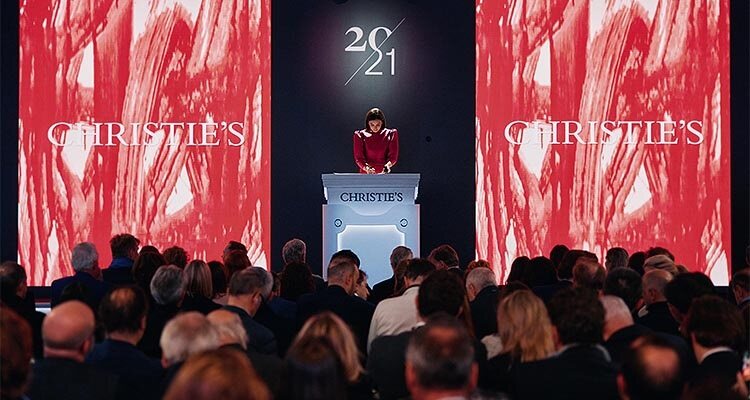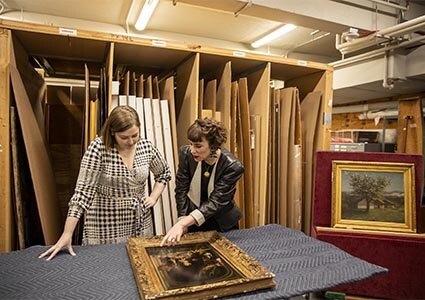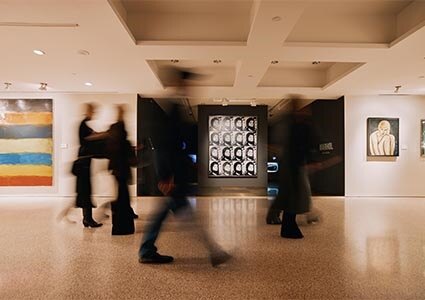
Discover how Christie’s is revolutionizing shipping logistics with sustainable packaging solutions
Internationally renowned for its expertise in live and online-only auctions, as well as bespoke private sales, Christie’s Ltd is a world-leading art and luxury business. Through an unparalleled network of specialists and a physical presence in 46 countries, including flagship international sales hubs in New York, London, Hong Kong, Paris and Geneva, Christie’s offers a full portfolio of global services. From art appraisal and financing to international real estate and education, Christie’s caters to a diverse clientele. Notably, Christie’s has sold seven of the ten most important single-owner collections in history, achieved the world record price for an artwork at auction, and manages an investment fund supporting innovative start-ups in the art market. Emily Klug, Senior Vice President and Director of Operations for Christie’s Americas, provides a brief introduction to the company.
“In 1766, a gentleman named James Christie founded the business as a single saleroom. Christie’s has since gone on to become one of the most prominent auction houses in the world. Starting out as a British business, the company expanded dramatically after World War Two, taking its operations to other parts of Europe, then Asia, and finally the US. In recent years, Christie’s has embraced the digital revolution. In fact, we now take more bids online than we do live in our salerooms. Livestreaming our auctions has empowered us to reach larger audiences than ever before, as it allows anyone interested to participate remotely. Likewise, we launched Christie’s 3.0, our on-chain auction platform dedicated to exceptional digital art. Today, Christie’s offers a vast range of objects. My colleagues are world-class experts in over 80 different categories of sales in luxury goods, including jewelry, watches, handbags, wine, and decorative and fine arts. These works of art range from the ancient to the contemporary, originating from Asia, Europe, the Americas and beyond,” she reveals.
houses in the world. Starting out as a British business, the company expanded dramatically after World War Two, taking its operations to other parts of Europe, then Asia, and finally the US. In recent years, Christie’s has embraced the digital revolution. In fact, we now take more bids online than we do live in our salerooms. Livestreaming our auctions has empowered us to reach larger audiences than ever before, as it allows anyone interested to participate remotely. Likewise, we launched Christie’s 3.0, our on-chain auction platform dedicated to exceptional digital art. Today, Christie’s offers a vast range of objects. My colleagues are world-class experts in over 80 different categories of sales in luxury goods, including jewelry, watches, handbags, wine, and decorative and fine arts. These works of art range from the ancient to the contemporary, originating from Asia, Europe, the Americas and beyond,” she reveals.
Committed to sustainability
Taking us behind the scenes of the auction process, Emily unveils Christie’s handling and shipping procedures for artwork. “As a full-service and client-focused company, Christie’s takes care of every part of the process with meticulous attention to detail. Operationally, this includes all logistics aspects, from artwork packing, shipping, and warehousing through to presentation in our galleries. While logistics in the art world have not changed massively in the last 50 years, we do stand on the brink of significant change. The traditional practice of shipping art objects in wooden travel frames and crates or cardboard boxes lined with ethafoam or filled with Styrofoam peanuts or plastic bubble wrap, transported via truck or plane to reach their destination, remains the dominant practice. However, in recent years, institutions have begun taking the environmental impact of this process more seriously, exploring whether there could be a better and more sustainable approach. It is evident that the process can be improved, and Christie’s sees it as our responsibility to be leaders in pushing for and committing to changes within this realm,” she explains.
 Emily highlights Christie’s journey towards promoting and engaging in more sustainable practices, logistics key among them. “We are proud to be the first auction house to set ambitious goals for reducing our environmental impact. In 2021, we released our first Environmental Impact Report and pledged to reduce our carbon emissions by 50 percent by 2030. Even with these commitments, we recognize that we are still in the early stages of our journey towards making meaningful changes in fine art logistics. Nonetheless, we remain committed to advancing change and are actively seeking to upend standard industry practices. We are consistently engaged in really productive conversations on the topic and are determined to experiment, challenge ourselves and defy norms, even though it isn’t always an easy process. We are acutely aware that we cannot single-handedly bring about the changes the world needs, it needs to be a collective industry effort. Christie’s is an active member of the Gallery Climate Coalition (GCC), constantly looking for more opportunities to collaborate and spark ongoing dialogue within the art sector,” she emphasizes. “Our regional Christie’s Green Teams play an important part in helping to embed sustainable practices within our business through educational programming and fun volunteering opportunities.”
Emily highlights Christie’s journey towards promoting and engaging in more sustainable practices, logistics key among them. “We are proud to be the first auction house to set ambitious goals for reducing our environmental impact. In 2021, we released our first Environmental Impact Report and pledged to reduce our carbon emissions by 50 percent by 2030. Even with these commitments, we recognize that we are still in the early stages of our journey towards making meaningful changes in fine art logistics. Nonetheless, we remain committed to advancing change and are actively seeking to upend standard industry practices. We are consistently engaged in really productive conversations on the topic and are determined to experiment, challenge ourselves and defy norms, even though it isn’t always an easy process. We are acutely aware that we cannot single-handedly bring about the changes the world needs, it needs to be a collective industry effort. Christie’s is an active member of the Gallery Climate Coalition (GCC), constantly looking for more opportunities to collaborate and spark ongoing dialogue within the art sector,” she emphasizes. “Our regional Christie’s Green Teams play an important part in helping to embed sustainable practices within our business through educational programming and fun volunteering opportunities.”
Positive change
As part of its dedication to environmentally friendly practices, Christie’s has made significant changes across its operations. “We launched a successful sea-freight program with Crozier, shifting shipments that would traditionally travel by air to the far more carbon-friendly sea-freight option. With the added time for sea freight, it isn’t viable for all transits, though it is promising and marks broader adoption across the industry for alternatives to air travel. Beyond transit, packaging is also an important area to scrutinize. Almost two years ago, Christie’s started working with one of our trusted vendors, DNA, who have developed a fully biodegradable crate. DNA’s Earthcrate functions much like traditional wooden crates with equal efficacy. Every part of the Earthcrate can be recycled or composted, ensuring that no component ends up in landfills. Christie’s has used Earthcrates for cross-country shuttle shipments and for sending sold property in consolidated crates to clients after sales, including on long-haul flights to Asia. We are currently in talks with DNA and other vendors like Dietl, to explore broader applications. We have tried reusable ROKBOX crates, though we have struggled with one-way transits and returning empty crates upon final delivery. ROKBOX’s new LOOP system helps resolve this issue with its multiple global hubs and rental-based structure. We are excited to begin leveraging LOOP this year and see how we can embed it in our business model,” Emily expresses.
Looking to the future, Emily lays out her aspirations for Christie’s. “I would like us to successfully transition from experimentation to full adoption of sustainable logistics practices. It is important for us to initiate positive change in the industry, and we know that collaboration will be key to our collective success,” she ends. As a global business with a rich history, Christie’s’ commitment to reducing its environmental impact sets an example that will surely inspire greater sustainability across the art industry.